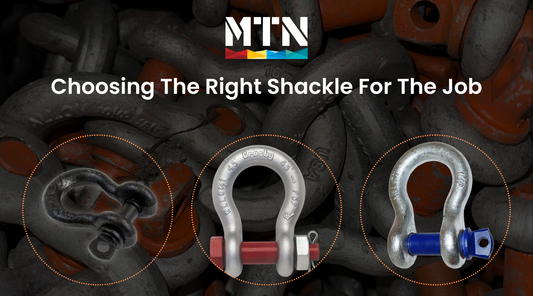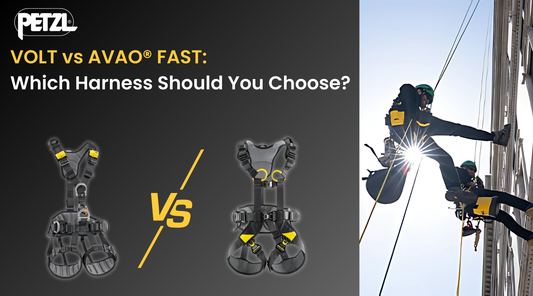Improve Your Fall Protection Rescue Plan with the Rollgliss™ R550
Article
No matter the industry, working at heights requires the use of fall protection equipment. In general, an industry where employees may be working on elevated platforms or ladders, the threshold height is 4 feet. For construction, the threshold is 6 feet, while scaffolding work requires fall protection at 10 feet.
Whenever fall protection is required, such as with rigging, rope access work, forestry, etc., it’s important to have a fall rescue plan in place. Since falls are among the most common causes of serious work-related injuries and deaths, it is important to both take the necessary steps to prevent them from occurring and perform a swift and safe rescue in the event of a fall.
Fall protection equipment such as harnesses, lanyards, and lifeline systems are meant to help you in the event of a fall. An appropriate, proper-fitting harness will help distribute weight while you are suspended post-fall and keep you connected to your anchor with the help of your shock-absorbing lanyards or lifeline system. However, while such personal protective equipment is meant to keep you safe in the event of a fall, there is the potential for harm if you are left suspended for too long. For this reason, at-height industry workers need to have a fall protection rescue plan in place.
A Reliable Rescue Plan After the Fall
If a personal fall arrest system has adequately done its job and has protected a worker from a deadly fall, the job is not yet over. While he or she may appear to be safely suspended from their harness and lanyard, the truth is there is still danger. It is important to promptly rescue any suspended individual to mitigate the risk of suspension trauma.
Suspension trauma occurs when a fallen individual is left suspended from their fall arrest harness. When hanging in such a harness, the leg straps that help support the body’s weight can cut off blood circulation. With the loss of circulation, the heart works harder, resulting in nausea, unconsciousness, and a drop in blood pressure and heart rate. Suspension trauma safety straps help mitigate this issue, but the fact remains that an individual cannot remain suspended forever.

3M™ DBI-SALA®
SUSPENSION TRAUMA SAFETY STRAPS
Having a proper fall protection rescue plan in place will help enable a prompt rescue, minimizing the risk of suspension trauma and other potential hazards. Per ANSI Z359.2-6.1, the recommended goal for rescue is less than six minutes.
Proper training is key when it comes to creating and executing a fall protection and rescue plan. And while all rescue plans are site-specific, some guides can help you develop your rescue plans for working at heights, such as this one from 3M™ DBI-SALA® and Protecta.
A comprehensive fall protection program will include a rescue plan for all possible scenarios. Depending on the environment, a plan may require different equipment and systems for rescue. Fortunately, the 3M™ DBI-SALA® Rollgliss™ R550 rescue and descent device is compatible with a wide range of rescue scenarios.
3M™ DBI-SALA® Rollgliss™ R550
The 3M™ DBI-SALA® Rollgliss™ R550 is a rescue and descent device that makes the perfect addition to your fall protection program and safety plan, especially when unassisted self-rescue is not possible. When outlining your rescue plan procedures, the Rollgliss™ R550 can be used for a variety of circumstances, including emergency escape, assisted rescue, pick-off rescue when the victim is out of reach, and custom rescues such as angles descent.

3M™ DBI-SALA® ROLLGLISS™ R550 RESCUE AND
DESCENT DEVICE 100'
Assisted Self Rescue
In instances where the fallen worker cannot safely reach the ground or the level from which he or she fell, the Rollgliss™ R550 can be secured to an anchor (rated for at least 3,000 lbs.) and the haul line lowered to him or her. Then, the worker will grab the rescue lifeline snap hook and secure it to the appropriate D-ring on their harness. Then the rescue team can raise or lower the fallen employee to the work platform or ground.
Assisted Rescue
If sustained injuries prevent the worker from attaching the rescue system, a rescue team member must attach the haul line to the worker’s fall arrest system and then raise or lower him or her to the appropriate work platform or ground. Because the Rollgliss™ R550 is rated to lower one or two people simultaneously, assisted rescues are possible no matter the circumstance or consciousness of the victim.
Rollgliss™ R550 Benefits
This state-of-the-art, fully automatic controlled descent device can be used for rescue and evacuation from heights up to 1,640 ft. for one user 310 lbs. or 575 ft. for two users totaling 620 lbs. It features 100’ of super static kernmantle rope (3/8”) and is configured with connecting hardware at each end of the lifeline to operate in both directions. The hand wheel enables rescuers to raise people a short distance to facilitate a rescue.
The Rollgliss™ R550 is suitable for many industries, including but not limited to Wind Turbine Construction & Maintenance, Utility Pole/Tower Construction & Maintenance, Fire & Emergency Rescue Services, Commercial Construction Sites, Industry and MRO Facilities, and Government & Military Operations.



